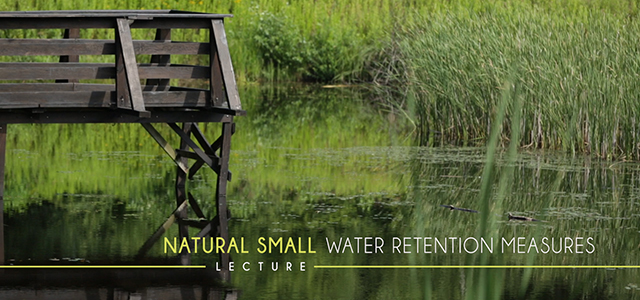The Natural Small Water Retention Measures video lecture is a product of a 3-year long demonstration project on Natural Small Water Retention Measures (NSWRM) which was implemented in a framework of the Integrated Drought Management Programme (IDMP CEE). The main outcome of the demonstration project were the Guidelines on Natural small water retention measures – combining drought mitigation, flood protection and biodiversity conservation.
During the course of the demonstration project experts from the four involved countries identified the need to create a modern and effective tool for delivering knowledge on NSWRM. Video lecture is an easy-to-access and engaging tool for delivering course content that supports the social and cognitive presence which are critical components to a successful learning experience. Widely recognized as a type of distance learning, video lectures can be also used for in-class teaching, at the same time giving the opportunity for self-study.
Who is the online lecture for?
This video lecture is designed for everyone who wants to understand the natural small water retention measures (NSWRM) concept as part of the integrated water resource management (IWRM). This course is building capacity for a sustainable future. Students can upgrade their skills in water management, professionals can hear about the practises of solving common water management problems and people from diverse disciplinary background can strengthen their understanding of the topics covered in the course.
Why are NSWRM important?
Anthropogenic changes such as river straightening or decreased retention capacity of watersheds result in the loss of three basic functions of watercourses: water retention, self-cleaning capacity, and maintenance of biodiversity and habitats. The SWRM approach aims to improve natural retention capacity of the watershed and can have significant positive effects on various water-related issues.
The various types of measures listed under the name NSWRM can have significant positive effects on solving environmental problems such as hydrological extremes, nutrients’ transport and decreased biodiversity. Their long-term positive effects on environmental issues also have a direct impact on both human and economic activities. This lecture promotes the NSWRM principles and investigates how water management is evolving beyond traditional engineering techniques to environmentally friendly and cost-effective solutions.
The Integrated Drought Management Programme
The Integrated Drought Management Programme (IDMP) in CEE was launched in 2013 by the Global Water Partnership (GWP) and the World Metorological Organization (WMO). The Programme supports the governments of Bulgaria, the Czech Republic, Hungary, Lithuania, Moldova, Poland, Romania, Slovakia, Slovenia and Ukraine in the development of drought management policies and plans. It also builds the capacity of stakeholders to use a proactive integrated drought management approach and tests innovative drought management approaches.
